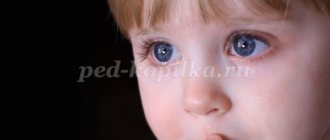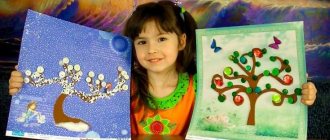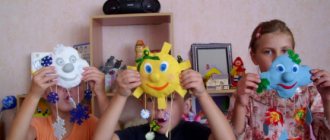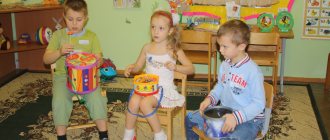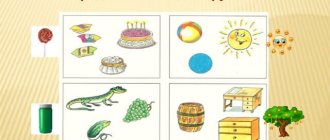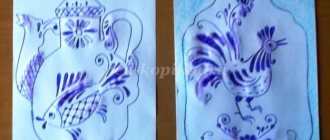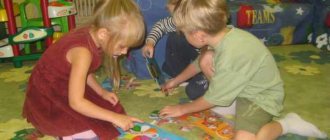Card index of walks "Winter" For older people
№ 27Comparative observation of bullfinch and waxwing
Target
– using the example of comparing the bullfinch with the waxwing, study the features of their structure, lifestyle (feeding, movement);
cultivate an educational interest in birds.
Conversation
Who has a breast brighter than the dawn? (At the bullfinch.)
Northern guests
Rowan berries are pecking at clusters.
So elegant and bright
There are tufts on the heads!
(Waxwing.)
What does a bullfinch look like? (The male bullfinch has a bluish-gray back, dazzling white undertail, black tail and wings, and a bright red breast. The female is more modestly colored - her breast is not scarlet, but dark gray.) What does a waxwing look like? (Her plumage is elegant, pinkish-brown, lighter on the chest and belly and darker on the back. The waxwing’s head is decorated with perky silver-pink crests.
And on the wings, as if drawn with a bright red pencil, there are even stripes.) What do they have in common? (These birds are migratory; bright plumage; they are residents of the north; they love rowan berries.) How does a bullfinch differ from a waxwing ?
(Size: the bullfinch is slightly larger than a sparrow, and the waxwing is the size of a starling, has a crest; plumage is colored.) Do we see these birds at feeders? Why? (These birds can be seen on rowan and viburnum bushes, as they feed on the berries and seeds of these plants.)
Is it possible to determine by the rowan berries scattered on the snow who fed on them? (Waxwings drop them on the snow, and bullfinches eat only the seeds, throwing out the pulp.) Do you know how bullfinches and waxwings behave? (Bullfinches leisurely fly in small flocks from tree to tree tree, slowly pecking at the berries. Waxwings are fast, nimble, timid; they fly in large flocks, pecking greedily and hastily.)
Work.
Spreading sand on slippery paths.
P/n:
“Owls”, “Birdhouses”. Skiing.
Individual work. Didactic games.
“Decide.” "What's extra."
Finger gymnastics
"Bullfinch".
Independent play activity.
Games with snow.
№ 29
Crow and Magpie Watching
Target
– consolidate the idea of the bird world, know their characteristic features.
Conversation
Magpie-Crow
Looks From Above,
From above to the sky
From an upside down branch.
Guys, look what a guest we have on the site. (Crow.) What
do you know about her? What is her character like? Why don't people like crows?
What's positive about it? The crow is called the gray robber.
Many do not like crows for their impudence and thieving habits. But still
We don’t have a bird smarter, more cunning, more resourceful: it will open a package of milk, and soak a stale cracker in a puddle, and crack a walnut. And if anyone decides to get close to the crow’s nest, beware. Neighbors will gather from all over the area, and together they will drive away the uninvited guest with a loud croak. The raven is the largest of the crow family. Raven and crow are completely different birds. You won't even see them together. Raven is a forest bird. In many fairy tales the crow is called wise. Maybe because this bird lives up to a hundred years. Do you know crow relatives? (Rook, jackdaw, magpie.) What magpie? What are the similarities and differences between crows
and magpie? You know Magpie well. Forest inhabitants respect the magpie. She has a long tail, flies everywhere, hears everything, knows everything. A magpie chirped in the bushes - the animals became wary and hid
birds. "Danger, danger!" - the magpie chirps, and
everyone understands her language.
Work.
Collective work on site.
P/n:
“The Kite and the Hen”, “Don’t Get Caught”. Badminton game.
Individual work. Didactic games.
"Guess the figure." “Put the word together.”
Finger gymnastics
"Crow".
Independent play activity.
Sledging.
Card index of walks in the senior group “December”
Ice-strongman experience
- pour water into a bottle and put it in a snowdrift at the end of the walk, examine the bottle, it is cracked - the volume of ice is always greater than the volume of water from which it was made; learn to draw conclusions.
Labor activity
: Clearing the area of snow
Target:
reinforce ideas about the protective properties of snow.
Outdoor games:
“Entertainers”, “Firemen in training”
Target:
strengthen the ability to run, dodge a trap, crawl under an obstacle. "Find yourself a mate"
Target:
develop agility, balance, endurance, spatial orientation
Individual work:
Development of movements
Target:
learn to throw snowballs into the distance.
Games at the request of children
Walk 2
Bird watching in winter
Target:
to form an idea of bird life in winter; cultivate a desire to take care of birds, highlighting signs of living things.
Progress of observation
There are no paths visible in the forest, fly, birdie, to people
The bushes are standing in sheepskin coats. And quickly hide outside the window,
Dormant beetles and larvae And we will feed you
Covered by snowfall under the bark. Bread crumbs, millet.
What birds do you see near your home in winter?
Why do they fly to human habitation? Why do people set up bird feeders in winter? Why do wintering birds need to be fed? Do many birds come to our feeders? What kind of food do they eat more readily? What else did you see while watching the birds at the feeder? Is there a feeder near your house?
Labor activity:
Clearing the area of younger preschoolers from snow.
Target:
cultivate a desire to help younger people.
Outdoor games :
"Cunning Couple"
Target:
develop your eye, achieving good results.
"Hit the target"
Target:
learn to follow the direction of a flying object, calculate and perform movements. "Frost - Red Nose"
Target:
learn to deftly and quickly run across the site;
Drawing
“Snow Artist” - Paints can be splashed on the snow and then sculpted from it. Or spray ready-made figures. Or just draw a picture directly in the snow.
Target:
develop creativity and imagination
Individual work:
Throwing snowballs into the distance and at the target.
Target:
develop coordination of movements.
Games at the request of children
An evening walk
Zimushka - winter
Target:
systematize children’s understanding of the characteristic signs of winter, and be able to talk about it beautifully.
Progress of observation
Who whitens the clearings with white, Sews feather beds,
And writes on the walls with chalk, Decorated all the windows?
Who knows the answer? What can you tell us about winter? (Cold, harsh, frosty, fierce, blizzard, angry, long.) After what does winter come? Name the winter months. What happens in nature in winter? What kind of trees are there? What lies on the roofs of houses and on the street? What do people wear in winter? How do animals and birds live in winter? Why? How can you help them? What winter holidays do you know? Children, think about how you can say beautiful things about snow and trees? (The snow lies in a wavy carpet and shimmers, sparkles, sparkles from the sun’s rays. There is fluffy, white, soft snow around and sparkles with multi-colored lights. Winter has dressed the trees in warm snow coats.) Now let’s come up with a story about the beauty of the winter forest. You must talk about the weather, the snow, the beauty of the trees, and what mood
Summary of educational activities in the senior group “Winter natural phenomena”
MUNICIPAL BUDGET PRESCHOOL EDUCATIONAL INSTITUTION KINDERGARTEN OF A GENERAL DEVELOPMENTAL TYPE WITH THE PRIORITY DIRECTION OF ARTISTIC AND AESTHETIC DEVELOPMENT OF PUPILS “ZVEZDOCHKA” P. PERVOMAYSKY ORENBURG DISTRICT ORENBURG REGION STI
SUMMARY OF EDUCATIONAL ACTIVITIES in the senior group
TOPIC: “Winter natural phenomena”
educational field "COGNITIVE development"
| Performed: | Teacher Khilkova Tatyana Vladimirovna |
Pervomaisky 2022
Educational activities in kindergarten (lesson notes)
| Note | |||
| 1.1 | Dominant educational field | Cognitive development | According to the Federal State Educational Standard | |
| 1.2 | Type of children's activity | Cognitive-research, communicative, gaming, motor. | According to the Federal State Educational Standard | |
| ||||
| 1. | Theme of educational activities | "Winter natural phenomena" | ||
| 2. | Methods and techniques for implementing lesson content | Verbal: conversation, dialogue, questions, reading the story “Winter Brothers.” Visual: looking at illustrations, conducting experiments. Game: didactic game “Remove the extra picture”; game exercise on word formation “What a winter.” Problematic: solving a problem situation (think about how we can help the monkey learn about winter). | ||
| 3. | Equipment | Box, toy monkey, ball, bell, illustrations “Winter natural phenomena”, 2 glasses of water (one with cold water, the other with warm water), pieces of ice, spoon, D/I “The Fourth Wheel”. | ||
| 4. | Integration of educational areas | Artistic and aesthetic development: reading a story from N. Vinogradova’s book “Riddle Stories about Nature” - “Winter Brothers”, asking a riddle. Physical development: physical training, I/U “What a winter.” Speech development: I/U “What a winter”, pronouncing simple phrases, children’s ability to give detailed answers, draw conclusions in the process of experimentation. Social and communicative development: the ability to study together, interact with adults and peers. | ||
| 5. | Age group: | Senior preschool age (5 – 6 years) | ||
| 6. | Target: | Enriching children's knowledge and ideas about winter natural phenomena. | ||
| 6. | Tasks: | |||
| 6.1 | To develop children's interest in exploring nature. | |||
| 6.2 | To develop cognitive activity, children’s ability to give detailed answers, skills of friendly communication and interaction with adults and peers. | |||
| 6.3 | Cultivate friendly relationships between children, the ability to study together. | |||
| 7. | Planned results: | |||
| 7.1 | He knows how to see the beauty of the world around him and shows love for nature. Observes seasonal changes in nature, is interested in the phenomena of inanimate nature. | |||
| 7.2 | Has knowledge of the properties of ice. Constructs connected statements and reasons. Possesses the ability to form adjectives from nouns. | |||
| 7.3 | Knows how to listen to another child without interrupting. Friendly in relationships with peers and adults. | |||
| 8. | Organization of the environment for conducting classes (educational activities) | See item 3. | ||
| 9 | Preparation for educational activities in the classroom and during restricted periods | Observations in nature of seasonal changes and winter phenomena. Making an album on the topic “Winter natural phenomena.” Didactic game “Living and inanimate nature”, drawing the natural phenomenon “Snowfall”. Conversation during the walk “Lowering air temperature”, conducting the experiment “Melting snow”. Reading fiction on the topic “Winter-winter natural phenomena”, reading and memorizing poems, stories, sayings, proverbs, folk signs, about birds, asking riddles. | ||
| Lesson summary (educational activity) | ||||
| I. | Introductory part | |||
| 1.1 | Introduction to the topic (creating a problem situation) | A package is brought to the hospital, containing a toy monkey. She really wants to learn from the children about the wonderful time of year that she and her friends know nothing about. But the children will have to find out what time of year they are talking about by guessing the riddle (or someone else will guess it first). Think about how a monkey can learn about winter. | ||
| 1.2 | Motivation for children's activities | Discuss with the children interesting and detailed ways of explaining the seasons to the monkey. | ||
| 1.3 | Goal setting | Lead children to the idea that they can talk about winter, talk about it, play games, look at illustrations, conduct experiments. | ||
| II. | Main part: | |||
| 2.1 | Updating previously acquired knowledge | Remind children about observations in nature, about the changes that occurred in nature in winter. Conversation based on illustrations “Winter natural phenomena.” Remember the winter months, winter fun. Solving riddles about the time of year. I/U “What a winter”, aimed at word formation of adjectives from nouns. | ||
| 2.2 | Acquisition (communication and acceptance) of new knowledge | Read to the children a story from N. Vinogradova’s book “Stories-Riddles about Nature” - “Winter Brothers”. Offer to tell which brother months are mentioned in the story and justify your answer. Conducting the experiment “Ice melting in water.” | ||
| 2.3 | Independent activities of children to consolidate new knowledge | Reading by heart the poem “January”. Monitoring the progress of experimental research activities. D/I “The fourth odd one”, reciting pure sayings. | ||
| III. | Final part | |||
| 3.1 | Analysis and self-analysis of children's activities | Listen to children's answers regarding this topic. What time of year were you talking about? What winter natural phenomena do you remember? What did you like most? Remind children of the purpose of their activities. | ||
| IV. | Further development of the topic | |||
| 4.1 | Continue further work with children to enrich knowledge about seasonal changes in nature and consolidate signs. Continue to maintain interest in the phenomena of living and inanimate nature, as well as the skills of experimentation. | |||
2
